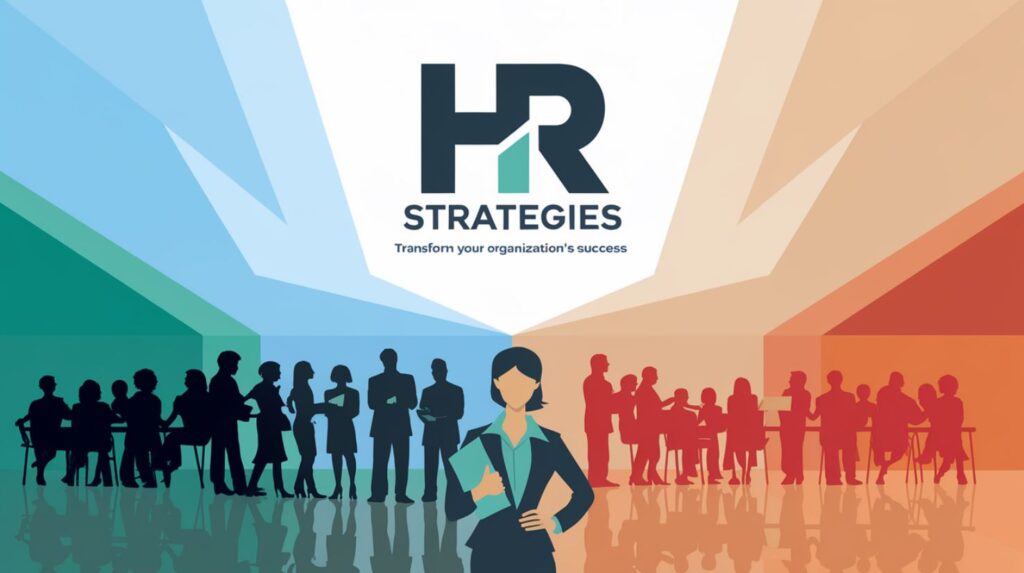Human resource (HR) management has become an essential component of modern organizations. Going beyond hiring and payroll functions, HR involves cultivating an environment in which employees feel valued, empowered, and motivated—creating an ideal working environment that encourages productivity increases while decreasing turnover rates and ensuring long-term sustainability for any given organization.
This article presents essential HR management strategies to build a high-performing workforce by overcoming challenges, using technology effectively, and cultivating an inclusive workplace culture. These techniques will assist HR professionals, managers, and business owners alike in aligning human capital with organizational goals.
Understanding HR Management
HR management entails planning, organizing, and allocating resources in order to reach organizational goals while prioritizing employee satisfaction and growth. Its primary aim is balancing organizational performance against employee well-being.
Modern HR Practices
Modern HR management places greater emphasis on strategic planning than reactive responses, covering areas like recruitment, training, employee engagement, compliance, and diversity. Shifting from traditional to strategic HRM has become ever more crucial as globalization takes hold.
Organizations that excel in HR management typically outshine their peers by encouraging innovation, cutting costs, and maintaining competitive advantages. Therefore, understanding the core principles and impacts of HR management are crucial to sustainable growth.
Key Strategies of HR Management
Recruitment and Talent Acquisition
Recruitment is about more than filling vacancies; it’s about finding individuals who align with your organizational values and goals.
-
Detailed Job Descriptions Start by writing detailed job descriptions outlining roles, responsibilities, and expectations.
-
Employer Branding Employer branding plays an integral part in building an exceptional workplace culture and reducing recruitment costs. Leverage social media channels to showcase your workplace culture via company reviews or employee testimonials. By building this strong identity, you can attract top talent while simultaneously cutting down hiring costs.
-
Diversified Hiring Channels Utilize LinkedIn, job boards, and niche recruitment websites to reach a broader pool of applicants.
-
Onboarding Processes A systematic onboarding and orientation process sets the tone for an employee’s journey with your company. Effective onboarding goes beyond a one-day orientation session. Create a 30–90-day plan highlighting key milestones for new hires.
Using Technology for Onboarding
Utilize digital tools to streamline documentation and training processes, making the experience seamless and engaging for everyone involved.
Training and Development
Continuous learning is vital in today’s ever-evolving environment.
-
Identifying Skill Gaps Organizations should identify skill gaps and offer specific training programs; personalized learning paths, microlearning modules, and access to e-learning platforms may help ensure optimal development support.
-
Leadership Training Investment in leadership training is equally essential. Consider enrolling managers in programs dedicated to emotional intelligence, conflict resolution, and strategic thinking.
-
Encouraging Growth Celebrate learning achievements by offering incentives such as certifications, promotions, or rewards.
Employee Engagement and Retention
Engaging employees directly affects productivity and profitability.
-
Open Communication Foster open communication by encouraging feedback and acknowledging achievements to create a positive workplace culture.
-
Employee Engagement Surveys Implement surveys regularly to measure satisfaction and address concerns promptly.
-
Recognition Programs Recognition programs like Employee of the Month awards or peer-to-peer recognition can significantly boost morale.
Diversity, Equity, and Inclusion (DEI)
Diverse backgrounds foster innovation and creativity in the workplace.
-
Auditing Workforce Demographics Conduct an audit of current workforce demographics and identify areas for improvement.
-
Training and Mentorship Provide unconscious bias training and mentorship programs targeted toward underrepresented groups.
-
Measuring Success Determine the success of DEI initiatives through employee feedback and retention rates.
HR Technology and Automation
Technology integration has transformed HR management.
-
HR Analytics Tools help organizations monitor metrics such as turnover rates, training effectiveness, and engagement levels.
-
Automation Automating repetitive tasks like payroll processing and attendance tracking allows HR teams to focus on strategic activities.
-
AI-Powered Tools Use AI-powered chatbots for screening candidates or addressing employee queries to improve efficiency and experiences.
Building a Sense of Community
Regular communication during onboarding and beyond helps to address uncertainties and fosters a sense of belonging from the very first day.
Employee Performance Management
Effective performance management goes beyond annual reviews.
-
Continuous Feedback Implement systems that provide regular feedback, set clear objectives, and track progress.
-
SMART Goals Use SMART (Specific, Measurable, Achievable, Relevant, and Time-bound) goals to set clear expectations.
-
One-on-One Meetings Arrange frequent meetings to discuss achievements, challenges, and potential areas for improvement.
-
Supporting Underperforming Employees React with understanding when an employee underperforms. Provide resources or training to help them excel.
A transparent performance management process ensures fairness while motivating employees to deliver their best work.
Promoting Workplace Wellness
Employees who feel supported in their mental and physical well-being are more likely to thrive.
-
Flexible Work Arrangements Provide options like remote work or flexible hours to meet diverse needs.
-
Wellness Initiatives Offer programs that support mental health, fitness, and overall wellness.
Fostering Innovation Through HR
Organizations that excel in HR encourage innovation by:
-
Creating environments that embrace creativity.
-
Offering platforms for employees to share new ideas.
-
Recognizing contributions to innovation.
The Evolving Role of HR Management
As technology and global markets evolve, HR management will continue to transform. Staying ahead requires:
-
Embracing emerging technologies.
-
Prioritizing diversity and inclusion.
-
Continuously aligning HR strategies with organizational goals.
By doing so, HR professionals can build resilient, high-performing teams that contribute to long-term organizational success.
Challenges in HR Management
HR professionals face a variety of challenges in creating and maintaining an effective workforce.
Adapting to Technological Advances
The rapid pace of technology requires HR teams to:
-
Stay updated on HR tools and systems.
-
Train employees to adapt to new technologies.
-
Balance automation with the need for human interaction.
Managing a Multigenerational Workforce
With multiple generations working together, organizations need to address differing communication styles, work preferences, and motivational factors.
Compliance with Employment Laws
Remaining compliant with local and international labor laws is critical. This involves:
-
Staying informed about changes in regulations.
-
Ensuring policies and practices adhere to legal standards.

